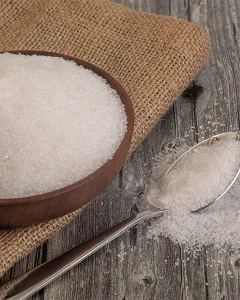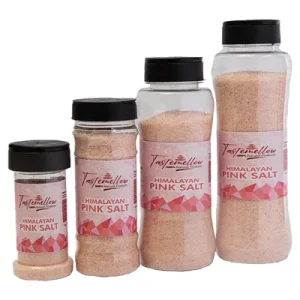- Office No. 101, Plot No. 28-C, Zulfiqar Commercial Street No. 4th, D.H.A., Phase VIII,, Karachi.
- info@theconsumerproducts.com
Process
Method for Producing Sea Salt
Sea salt, a crucial natural resource, accounts for around 3.5% of the Earth’s oceans. It is created using a combination of natural and industrial processes. Here, we look at the detailed process of producing sea salt, both naturally and by industrial ways.
Natural Sea Salt Production:
- Collecting of Saltwater: The procedure starts with the collecting of saltwater from the Earth’s oceans or seas. This water has a lot of dissolved ions, mostly sodium chloride (NaCl).
- Solar Evaporation : The collected saltwater is moved to shallow evaporation ponds or puddles in natural sea salt manufacturing. These ponds are intentionally placed to take advantage of the light and wind. The sun’s energy heats the water, which causes it to slowly evaporate over time.
- Salt Crystal Formation: The concentration of salt in the remaining water rises as the water evaporates. Eventually, the sodium chloride (salt) approaches saturation, resulting in the formation of salt crystals. These crystals grow in size over time.
- Wind and Natural Processes: Wind is essential in this natural salt production method. It aids in evaporation by constantly churning the water surface, allowing for efficient salt concentration. Furthermore, natural contaminants and minerals found in seawater may affect the colour and flavour of the finished sea salt product.
- Harvesting: The salt crystals sink at the bottom of the evaporation ponds once they have attained an ideal size. These crystals are gathered manually or mechanically, generally using rakes or other harvesting tools. After collecting the salt, it is rinsed to remove any remaining contaminants.
Industrial Sea Salt Production:
- Seawater Condensation Ponds: The manufacturing of industrial sea salt is a highly controlled and efficient process. Large, well built condensation ponds are filled with seawater. To prevent contamination, these ponds are frequently walled with impermeable materials.
- Solar Evaporation and Crystallization: Industrial manufacture, like the natural technique, relies on solar evaporation to concentrate the salt. The process is sped up, however, by the employment of designed systems that optimize heat absorption and salt crystal production. This leads in a higher salt production in a shorter period of time.
- Mechanical Harvesting: Salt crystals are often gathered in industrial settings utilizing mechanical equipment such as salt rakes, plows, or conveyor systems. These machines collect the salt crystals from the ponds with care.
- Washing and Purification: The harvested salt is thoroughly washed to remove contaminants such as leftover minerals and organic materials. To obtain high-quality sea salt, the salt is frequently dissolved in water, filtered, and recrystallized.
- Packaging and Distribution: The finished sea salt product is meticulously packaged and ready for delivery to a variety of sectors and customers.
Method for Producing Himalayan Rock Salt
Himalayan Rock Salt Extraction Methods:
- Deep Shaft Mining: Access to subsurface salt resources is provided through the construction of vertical shafts or tunnels in deep shaft mining. Miners can use these tunnels to reach salt-rich regions deep within the Earth’s crust. The rock salt is subsequently removed either manually or with the use of machines.
- Solution Mining: Solution mining, on the other hand, entails dissolving the rock salt underground and then extracting the saline solution. This technology is especially effective when regular mining methods are not readily available. Water is injected into the salt layers, and when the salt dissolves, the brine produced is raised to the surface for further processing.
Purification of Rock Salt:
- Drilling: After the rock salt is extracted, it may be drilled into manageable-sized bits or blocks. This drilling makes further processing and shipment easier.
- Grinding: The rock salt may also be subjected to grinding processes to reduce it to a desired particle size. This step helps create uniformity in the salt product.
- Transfer Machines: Various transfer machines, such as conveyor systems or automated equipment, are employed to transport the extracted salt from the mining site to the processing facilities.
- Purification Techniques: Different purifying procedures are used at the processing facility to remove minerals and contaminants. Filtration, precipitation, and chemical treatments may be used to improve the purity of the salt.
- Final Product: The refined Himalayan rock salt is ready for packaging and delivery once it has been purified. To accommodate a wide range of culinary and therapeutic applications, it is frequently packed in various forms such as crystals, chunks, or finely ground powder.Himalayan rock salt is well-known for its distinct composition and high mineral content, making it a sought-after product in a variety of industries, including culinary, wellness, and industrial. The extraction and purification techniques ensure that buyers obtain a high-quality and pure Himalayan salt product.
Method For Producing
Sea salt, a crucial natural resource, accounts for around 3.5% of the Earth’s oceans. It is created using a combination of natural and industrial processes. Here, we look at the detailed process of producing sea salt, both naturally and by industrial ways.
Natural Sea Salt Production:
- Collecting of Saltwater: The procedure starts with the collecting of saltwater from the Earth’s oceans or seas. This water has a lot of dissolved ions, mostly sodium chloride (NaCl).
- Solar Evaporation : The collected saltwater is moved to shallow evaporation ponds or puddles in natural sea salt manufacturing. These ponds are intentionally placed to take advantage of the light and wind. The sun’s energy heats the water, which causes it to slowly evaporate over time.
- Salt Crystal Formation: The concentration of salt in the remaining water rises as the water evaporates. Eventually, the sodium chloride (salt) approaches saturation, resulting in the formation of salt crystals. These crystals grow in size over time.
- Wind and Natural Processes: Wind is essential in this natural salt production method. It aids in evaporation by constantly churning the water surface, allowing for efficient salt concentration. Furthermore, natural contaminants and minerals found in seawater may affect the colour and flavour of the finished sea salt product.
- Harvesting: The salt crystals sink at the bottom of the evaporation ponds once they have attained an ideal size. These crystals are gathered manually or mechanically, generally using rakes or other harvesting tools. After collecting the salt, it is rinsed to remove any remaining contaminants.
Industrial Sea Salt Production:
- Seawater Condensation Ponds: The manufacturing of industrial sea salt is a highly controlled and efficient process. Large, well built condensation ponds are filled with seawater. To prevent contamination, these ponds are frequently walled with impermeable materials.
- Solar Evaporation and Crystallization: Industrial manufacture, like the natural technique, relies on solar evaporation to concentrate the salt. The process is sped up, however, by the employment of designed systems that optimize heat absorption and salt crystal production. This leads in a higher salt production in a shorter period of time.
- Mechanical Harvesting: Salt crystals are often gathered in industrial settings utilizing mechanical equipment such as salt rakes, plows, or conveyor systems. These machines collect the salt crystals from the ponds with care.
- Washing and Purification: The harvested salt is thoroughly washed to remove contaminants such as leftover minerals and organic materials. To obtain high-quality sea salt, the salt is frequently dissolved in water, filtered, and recrystallized.
- Packaging and Distribution: The finished sea salt product is meticulously packaged and ready for delivery to a variety of sectors and customers.
Natural and industrial processes both contribute to the global supply of sea salt, which is used in a variety of culinary and industrial uses. While natural production is still important, industrial procedures offer a continuous and reliable supply of high-quality sea salt for a variety of applications.
Himalayan rock salt is created from subterranean deposits formed over millennia by ancient underground waterways within the Earth’s stony sub-layers. Rock salt is extracted largely by two methods: deep shaft mining and solution mining, followed by purification operations to remove contaminants. In this section, we delve deeper into the manufacturing process, covering the machinery used for each approach.
Himalayan Rock Salt Extraction Methods:
- Deep Shaft Mining: Access to subsurface salt resources is provided through the construction of vertical shafts or tunnels in deep shaft mining. Miners can use these tunnels to reach salt-rich regions deep within the Earth’s crust. The rock salt is subsequently removed either manually or with the use of machines.
- Solution Mining: Solution mining, on the other hand, entails dissolving the rock salt underground and then extracting the saline solution. This technology is especially effective when regular mining methods are not readily available. Water is injected into the salt layers, and when the salt dissolves, the brine produced is raised to the surface for further processing.
Purification of Rock Salt:
Regardless of the method of extraction, the resulting rock salt often contains a range of minerals and contaminants. Purification processes are required to achieve high-quality Himalayan rock salt. To remove these compounds from the salt, various chemical processes are used.
- Drilling: After the rock salt is extracted, it may be drilled into manageable-sized bits or blocks. This drilling makes further processing and shipment easier.
- Grinding: The rock salt may also be subjected to grinding processes to reduce it to a desired particle size. This step helps create uniformity in the salt product.
- Transfer Machines: Various transfer machines, such as conveyor systems or automated equipment, are employed to transport the extracted salt from the mining site to the processing facilities.
- Purification Techniques: Different purifying procedures are used at the processing facility to remove minerals and contaminants. Filtration, precipitation, and chemical treatments may be used to improve the purity of the salt.
- Final Product: The refined Himalayan rock salt is ready for packaging and delivery once it has been purified. To accommodate a wide range of culinary and therapeutic applications, it is frequently packed in various forms such as crystals, chunks, or finely ground powder.Himalayan rock salt is well-known for its distinct composition and high mineral content, making it a sought-after product in a variety of industries, including culinary, wellness, and industrial. The extraction and purification techniques ensure that buyers obtain a high-quality and pure Himalayan salt product.